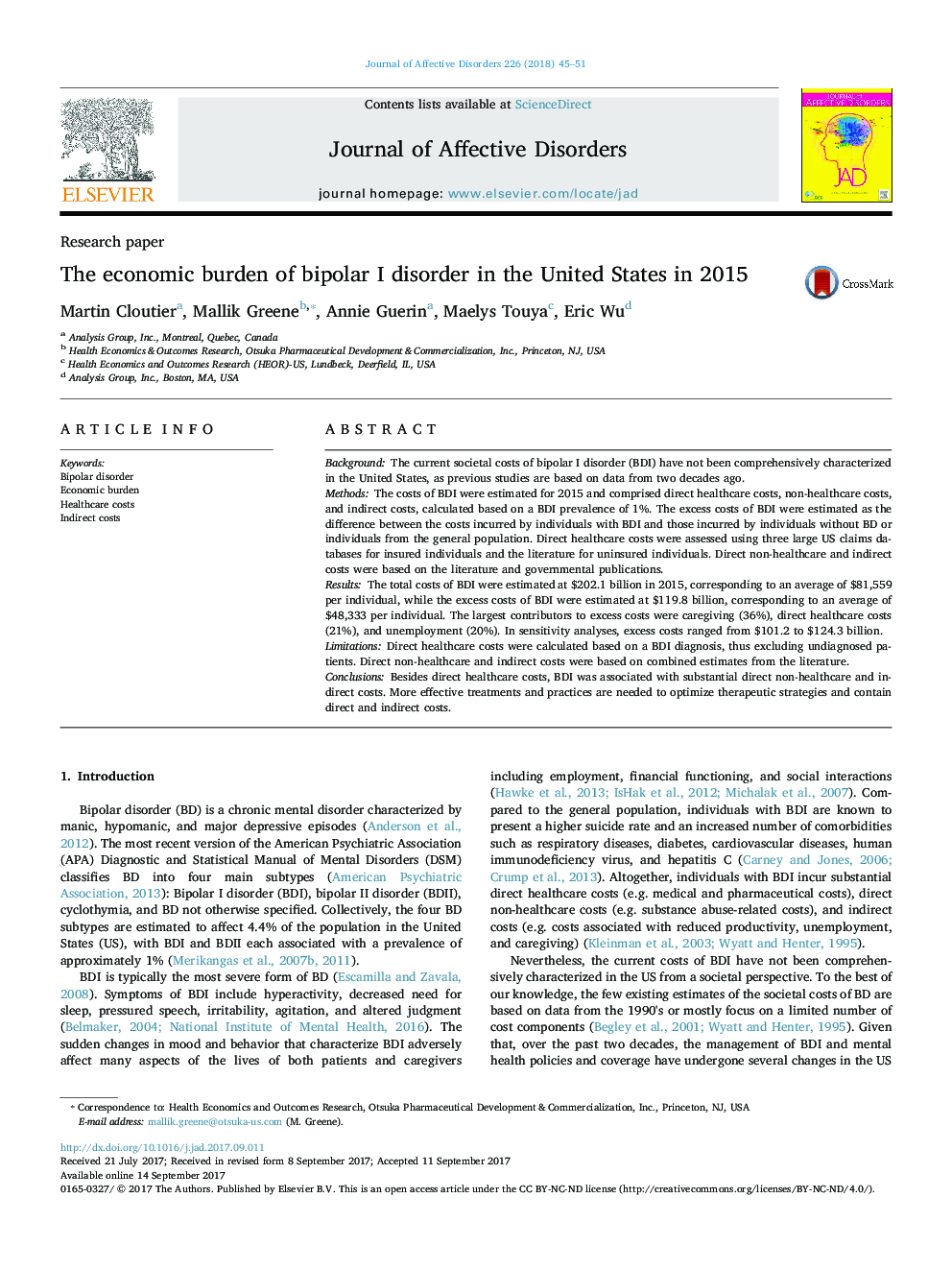| Article ID | Journal | Published Year | Pages | File Type |
|---|---|---|---|---|
| 5721637 | Journal of Affective Disorders | 2018 | 7 Pages |
â¢Current US societal costs of bipolar I disorder (BDI) are not well-characterized.â¢In 2015, the US economic burden of BDI was substantial.â¢Total and excess costs were estimated at $202.1 and $119.8 billion, respectively.â¢Caregiving, direct healthcare costs, and unemployment were the main cost drivers.
BackgroundThe current societal costs of bipolar I disorder (BDI) have not been comprehensively characterized in the United States, as previous studies are based on data from two decades ago.MethodsThe costs of BDI were estimated for 2015 and comprised direct healthcare costs, non-healthcare costs, and indirect costs, calculated based on a BDI prevalence of 1%. The excess costs of BDI were estimated as the difference between the costs incurred by individuals with BDI and those incurred by individuals without BD or individuals from the general population. Direct healthcare costs were assessed using three large US claims databases for insured individuals and the literature for uninsured individuals. Direct non-healthcare and indirect costs were based on the literature and governmental publications.ResultsThe total costs of BDI were estimated at $202.1 billion in 2015, corresponding to an average of $81,559 per individual, while the excess costs of BDI were estimated at $119.8 billion, corresponding to an average of $48,333 per individual. The largest contributors to excess costs were caregiving (36%), direct healthcare costs (21%), and unemployment (20%). In sensitivity analyses, excess costs ranged from $101.2 to $124.3 billion.LimitationsDirect healthcare costs were calculated based on a BDI diagnosis, thus excluding undiagnosed patients. Direct non-healthcare and indirect costs were based on combined estimates from the literature.ConclusionsBesides direct healthcare costs, BDI was associated with substantial direct non-healthcare and indirect costs. More effective treatments and practices are needed to optimize therapeutic strategies and contain direct and indirect costs.
